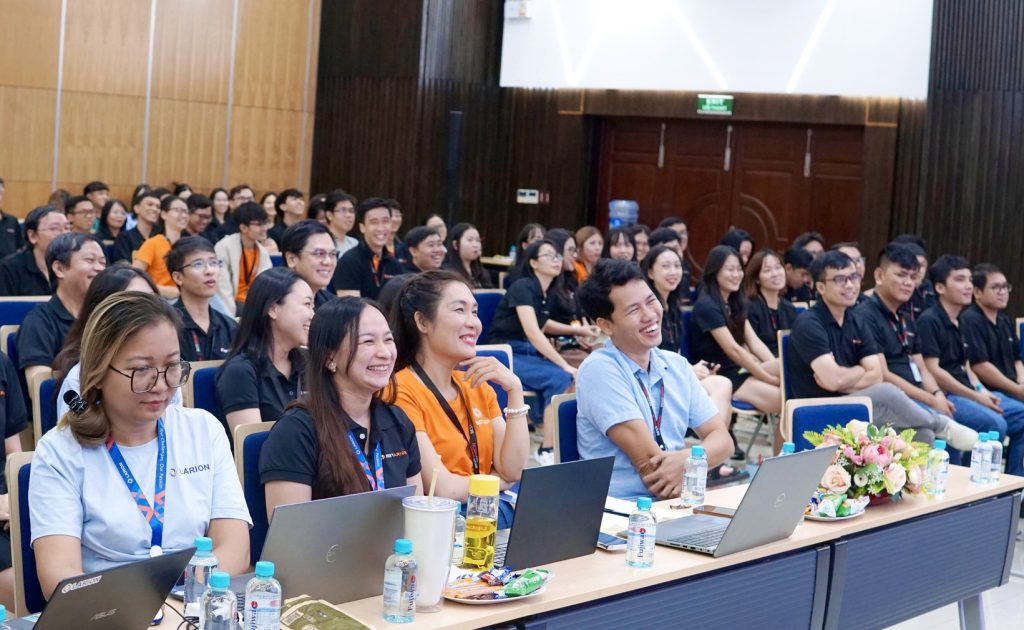IT Outsourcing Contract Models: Which One Fits Your Needs?

In the rapidly evolving digital landscape, businesses are increasingly turning to IT outsourcing to enhance efficiency, access specialized skills, and reduce operational costs. However, selecting the appropriate outsourcing contract model is crucial to ensure alignment with project goals, budget constraints, and desired flexibility. This comprehensive guide delves into the primary IT outsourcing contract models, their advantages and disadvantages, and provides insights to help you determine the best fit for your organization’s needs.
What are IT Outsourcing Contract Models?

IT outsourcing involves delegating specific IT functions or projects to external service providers. The contractual agreement between a client and a service provider defines the scope, responsibilities, payment terms, and other critical aspects of the engagement. The three predominant contract models in IT outsourcing are:
-
Fixed-Price Model
-
Time and Materials (T&M) Model
-
Dedicated Team Model
-
Build-Operate-Transfer (BOT)
-
Offshore Development Center (ODC)
-
IT Staff Augmentation
-
Managed IT Services
Each model offers distinct features and is suitable for different project types and organizational requirements.
7 Most Popular IT Outsourcing Contract Models Explained
1. Fixed-Price Model
The fixed-price model is one of the most straightforward and popular IT outsourcing contract models. In this model, the service provider agrees to deliver a specific set of services or a project for a predetermined, fixed cost. This model is ideal for projects with a well-defined scope and clear deliverables.
Pros:
-
Predictable Budget: Clients benefit from cost certainty, as the total project cost is agreed upon upfront.
-
Defined Scope: Clear specifications minimize ambiguities, facilitating straightforward project management.
-
Minimal Oversight: Once the project parameters are set, clients can adopt a hands-off approach, relying on the vendor to deliver as agreed.
Cons:
-
Limited Flexibility: Accommodating changes or new requirements can be challenging and may incur additional costs.
-
Risk of Misalignment: If initial requirements are not thoroughly detailed, the final product may not meet expectations.
-
Potential Quality Trade-offs: Vendors may prioritize staying within budget over quality enhancements.
Best Suited For:
-
Projects with clearly defined requirements and deliverables.
-
Short-term initiatives with limited scope.
-
Organizations with fixed budgets and timelines.
2. Time and Materials (T&M) Model
The T&M model charges clients based on the actual time spent and resources utilized by the service provider. This approach offers flexibility to accommodate evolving project requirements.
-
Adaptability: Ideal for projects where requirements may change over time.
-
Transparency: Clients receive detailed reports on time and resources expended.
-
Collaborative Approach: Encourages ongoing communication between client and vendor.
Cons:
-
Budget Uncertainty: Total project costs can be difficult to predict.
-
Requires Active Management: Clients need to monitor progress and expenditures closely.
-
Potential for Scope Creep: Without strict oversight, projects may extend beyond original intentions.
Best Suited For:
-
Projects with dynamic or evolving requirements.
-
Long-term engagements where flexibility is paramount.
-
Organizations adopting Agile or iterative development methodologies.
3. Dedicated Team Model
In the dedicated team model, the client hires a team of IT professionals from the service provider. This team works exclusively on the client’s projects and is managed by the client.
Pros:
-
Full Control: Clients can manage the team’s workload and project direction.
-
Consistency: A dedicated team ensures continuity and deep understanding of the client’s business.
-
Scalability: Teams can be scaled up or down based on project needs.
Cons:
-
Higher Costs: Maintaining a dedicated team can be more expensive than other models.
-
Management Responsibility: Clients are responsible for overseeing the team’s performance and productivity.
-
Integration Challenges: Aligning the external team with internal processes may require effort.
Best Suited For:
-
Long-term projects requiring sustained collaboration.
-
Organizations needing specialized skills not available in-house.
-
Businesses seeking to extend their development capabilities without hiring full-time staff.
4. Build-Operate-Transfer (BOT) Model
The BOT model is a long-term partnership where the outsourcing vendor sets up and runs an offshore team or subsidiary for the client, and after a specified period, the entire operation is transferred to the client. This is ideal for companies planning to establish a permanent presence offshore.
Pros:
-
Strategic Expansion: Enables companies to explore new markets without immediately committing to setting up their own local entity.
-
Reduced Risk: The vendor handles setup, operations, compliance, and HR initially.
-
Smooth Transition: Once the operation stabilizes, ownership is transferred with minimal disruption.
Cons:
-
Long-Term Commitment: Not suitable for short-term projects.
-
Complex Legal Structure: Transfer phase requires strong legal and financial planning.
-
Initial Investment: Higher upfront costs compared to other models.
Best Suited For:
-
Enterprises looking to establish offshore R&D or delivery centers.
-
Businesses with long-term outsourcing strategies.
-
Companies that want full control over time but not from day one.
5. Offshore Development Center (ODC)
An offshore development center (ODC) is a dedicated team located offshore that functions as an extension of the client’s in-house team. It’s typically managed by the outsourcing provider but operates with close client collaboration, sharing workflows and communication tools.
Pros:
-
Cost Savings: Leverages global talent at significantly reduced labor costs.
-
Scalability: Teams can be easily scaled up or down.
-
Dedicated Resources: Greater focus and alignment with your business goals.
Cons:
-
Cultural and Time Zone Differences: Can lead to miscommunication or workflow delays.
-
Dependency: Overreliance on one provider or country can pose risks.
-
Data Security: Sensitive data shared across borders requires strict controls.
Best Suited For:
-
Startups or midsize businesses with high development needs.
-
SaaS and tech firms requiring scalable engineering teams.
-
Companies needing consistent and dedicated offshore delivery.
6. IT Staff Augmentation
IT Staff Augmentation allows companies to add external developers or engineers to their internal teams temporarily. These professionals are employed by the vendor but work under the client’s direction and processes.
Pros:
-
Speed: Quickly fills talent gaps in specific roles or technologies.
-
Flexibility: Hire for a few months or years based on your needs.
-
Control: Augmented staff follow your internal protocols and workflows.
Cons:
-
Training Time: Augmented staff still require onboarding and integration.
-
Limited Ownership: The augmented staff are not your employees, which may affect loyalty or retention.
-
Higher Hourly Rates: Often costlier per hour than offshore fixed contracts.
Best Suited For:
-
Companies with in-house teams needing a temporary skill boost.
-
Projects with urgent delivery schedules.
-
IT departments with short-term resourcing needs.
7. Managed IT Services
In the managed IT service model, a third-party provider assumes complete responsibility for specific IT functions, such as infrastructure, cybersecurity, cloud services, or application support, often under a Service-Level Agreement (SLA).
Pros:
-
Operational Efficiency: Frees up internal resources for core business activities.
-
24/7 Support: Round-the-clock monitoring and maintenance.
-
Expertise & Tools: Access to specialized tools, frameworks, and talent.
Cons:
-
Loss of Control: Day-to-day control over managed systems is often limited.
-
Long-Term Contracts: May require 1–3 year commitments.
-
Service Gaps: Quality and responsiveness vary among providers.
Best Suited For:
-
SMBs and enterprises without a full internal IT department.
-
Companies prioritizing system uptime, data security, and SLA-based support.
-
Organizations migrating to the cloud or managing hybrid environments.
What Are the Key Factors to Consider When Choosing an IT Outsourcing Contract Model?
Choosing the right IT outsourcing model can significantly impact your project’s success, cost efficiency, and scalability. Before selecting a model like IT Staff Augmentation, Managed Services, Dedicated Development Team, or Build-Operate-Transfer (BOT), it’s important to evaluate several key factors:
1. Project Scope and Complexity
If your project is well-defined and short-term, staff augmentation may suffice. For larger, long-term projects with complex requirements, a dedicated team or BOT model could offer more value and control.
2. Budget and Cost Structure
Each model comes with different cost implications. Hourly-based augmentation offers flexibility, while managed services and BOT often provide predictable, long-term savings. Make sure your choice aligns with your financial goals and cash flow.
3. Level of Control Required
Do you need full control over your development team? Opt for staff augmentation or a dedicated team model. If you prefer to hand over the day-to-day management and focus on outcomes, managed services may be more suitable.
4. In-House Capabilities
If your internal IT team lacks specific expertise or bandwidth, outsourcing can bridge the skills gap. Choose a model that complements your in-house capabilities rather than replaces them entirely.
5. Time-to-Market
Some models enable faster deployment than others. Staff augmentation offers a quick ramp-up, while BOT provides long-term scalability but takes more time to establish.
6. Security and Compliance
Data security and regulatory compliance are especially important in industries like finance, healthcare, and government. A managed services provider with domain-specific certifications may better address these concerns than a loosely-managed external team.
7. Scalability and Flexibility
Consider how easily the outsourcing model allows you to scale up or down based on changing needs. Flexible models like dedicated teams or staff augmentation are ideal for agile environments.
8. Cultural and Time Zone Alignment
Offshoring can bring cost benefits but may introduce challenges with time zones, communication, and cultural alignment. Nearshoring or hybrid models can provide a balance between cost and collaboration efficiency.
Final Thoughts: Which Outsourcing Model Fits Your Needs?
Now that we’ve explored seven core IT outsourcing contract models, it’s time to match them to your organizational priorities. Here’s a quick cheat sheet:
| Goal | Best Model(s) |
|---|---|
| Save costs & meet tight budgets | Offshore Development Center, Staff Augmentation |
| Need complete control | Dedicated Team, Staff Augmentation, BOT |
| Scale fast with flexibility | Time & Materials, ODC, Staff Augmentation |
| Run IT infrastructure seamlessly | Managed Services |
| Plan permanent offshore setup | BOT Model |
| Deliver a clear-scope project | Fixed-Price Model |
| Handle long-term Agile project | Dedicated Team, T&M, Staff Augmentation |
Why Choose Bestarion for Your IT Outsourcing Needs?
At Bestarion, we offer comprehensive full-cycle software development services tailored to meet the dynamic needs of modern businesses. Our expertise spans across:
-
Cloud Deployment and Infrastructure Management
We understand that every organization is different, which is why we provide a range of flexible IT outsourcing models. Whether you require a Dedicated Team, need to scale with IT Staff Augmentation, prefer a Managed Services approach, or are considering a Build-Operate-Transfer (BOT) model, we align our services with your strategic objectives.
With years of experience serving clients in industries such as finance, healthcare, manufacturing, and SaaS, we help businesses reduce operational costs, increase development speed, and ensure long-term scalability.
Get in touch with us today to explore how Bestarion can support your software development goals and deliver measurable value through the right outsourcing model.


